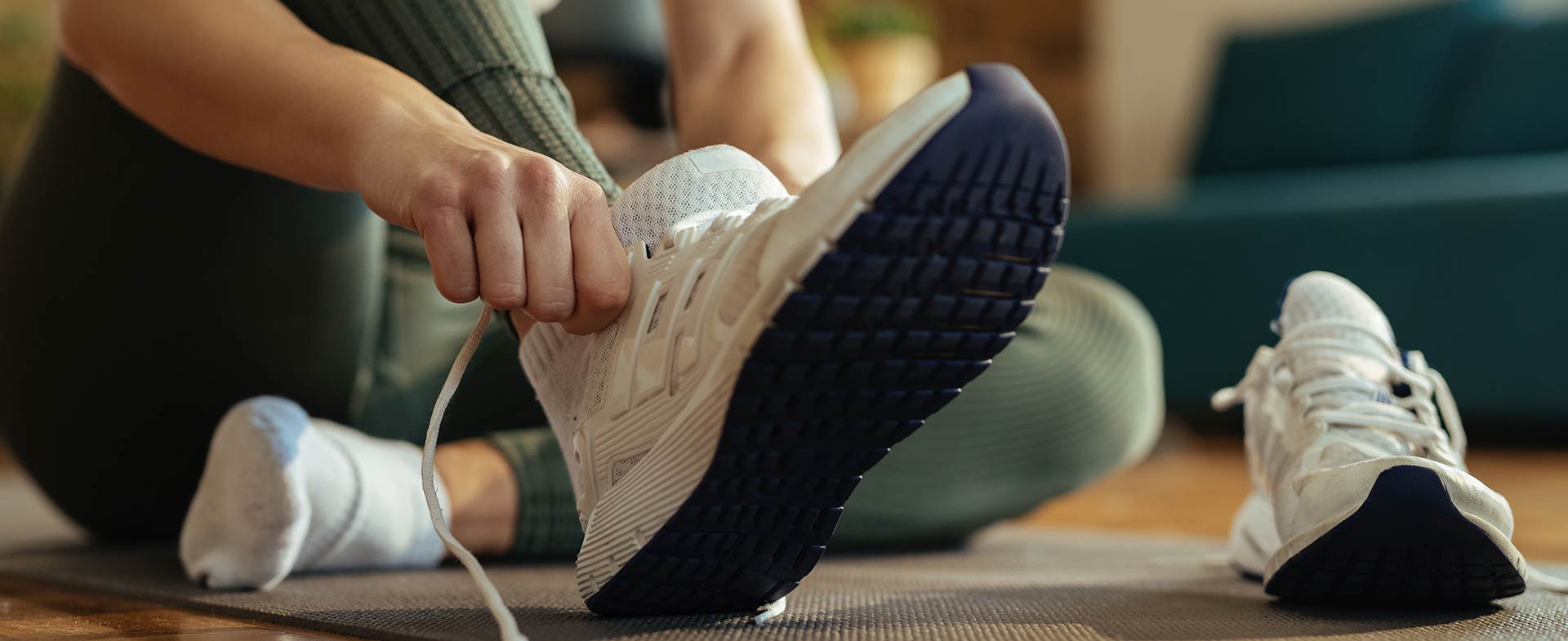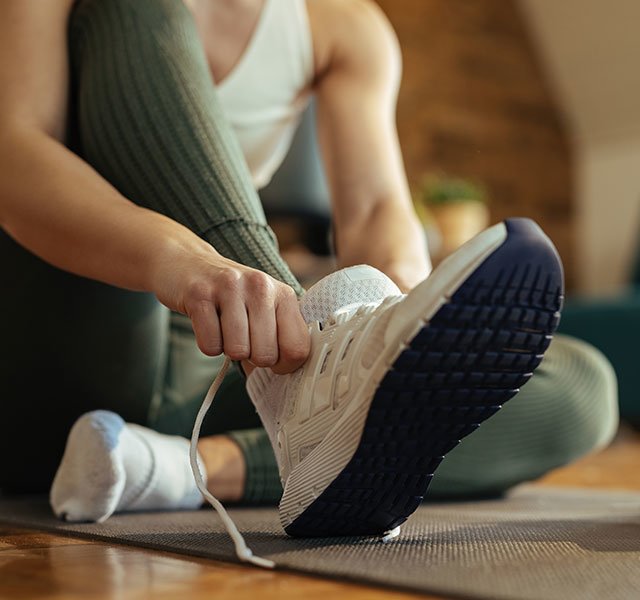Thanks to COVID-19, many of us have spent the better part of a year either barefoot or in slippers. When you work from home, can't leave the house for happy hour and stop participating in sports, why wear shoes? The trouble is, socks and slippers come with drawbacks.
"Socks and slippers keep your feet warm, but they don't provide support," says Nicole Brouyette, DPM, a podiatrist at Henry Ford Health. "Plus, if you're sweating inside a sock or a slipper, you're creating a perfect environment for nail fungus to grow and thrive."
What You Need To Know About Wearing Shoes Inside
Wearing shoes or slippers inside is about more than just comfort. Doctors recommend them over walking barefoot at home to prevent injuries and accidents and keep your feet in top shape. In fact, for people with plantar fasciitis, back problems and chronic conditions like diabetes, wearing the right shoes can provide serious relief.
When you're looking for slippers or other indoor shoes, it's tempting to select the comfiest pair you can find. But according to Dr. Brouyette, support trumps comfort when it comes to caring for weary feet.
What to Look For In An Indoor Shoe
Choosing the best shoe to support your feet isn't always clear-cut. You might wonder, "What type of slipper is best? Should I go with a sandal or something closed-toe? What type of supports are necessary?"
Dr. Brouyette weighs in with her must-have features for supportive shoes:
- Support. To do the job, shoes should have to provide structure and support. If you can bend your slipper in half, you're not getting the arch support you need. "If you have heel pain, you might even consider wearing an athletic shoe as your house slipper," Dr. Brouyette says. "Just make sure you earmark that particular shoe for indoor use only."
- Breathability. Bacteria and fungus grow and thrive in moist environments, so if your feet tend to sweat, you may want to choose a more breathable style.
- A firm sole. In addition to arch support and breathable fabrics, slippers should have a firm sole. The sole not only provides additional support for your feet, it also helps absorb shock and provides traction to prevent slipping.
Becoming Shoe Savvy
Not sure if you need inside shoes? "You do," Dr. Brouyette says, "especially if you have a foot condition that causes toe pain, heel pain or arch pain." But there are some ground rules for wearing them safely:
- Keep them indoors. Don't wear slippers outdoors, even if you're using a traditional athletic shoe as a slipper. Wearing slippers outside increases the risk that you'll pick up things that could make you sick. Plus, switching from slippers to shoes offers your slippers sufficient time to air out.
- Monitor the smell. Skin cells on your feet constantly shed just like they do on the rest of your body. Over time, those dead skin cells can accumulate inside your shoe. Fungus causes an unpleasant and persistent odor. If you get a whiff of that, it may be time for a new pair.
- Change them out. Make sure you swap out slippers at regular intervals, particularly if you wear them without socks. If your slippers become worn, smelly or develop holes in the sole, it's time for a new pair.
To find a doctor or podiatrist at Henry Ford, visit henryford.com or call 1-800-HENRYFORD (436-7936).
Dr. Nicole Brouyette is a foot and ankle surgeon who sees patients for podiatric needs at Henry Ford Hospital — Detroit, Henry Ford Medical Center — Fairlane and Henry Ford Medical Center – Pierson Clinic.



